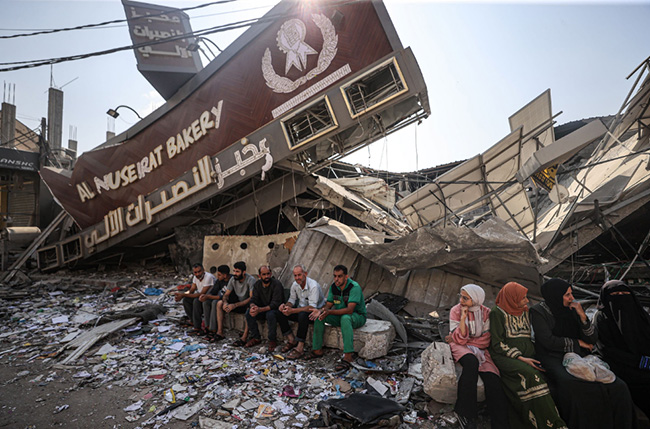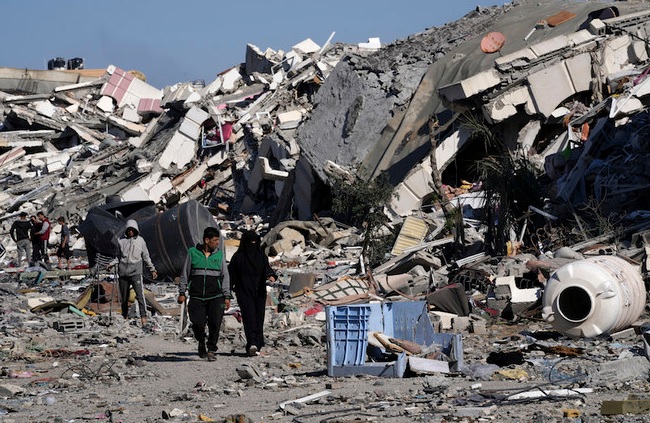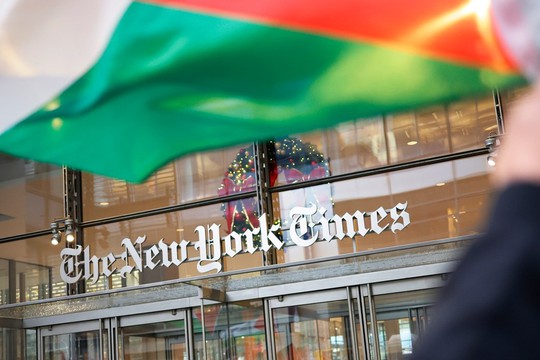Amid the internal battle over the New York Times’s coverage of Israel’s war, top editors handed down a set of directives, reveals ‘The Intercept’.
THE NEW YORK TIMES instructed journalists covering Israel’s war on the Gaza Strip to restrict the use of the terms “genocide” and “ethnic cleansing” and to “avoid” using the phrase “occupied territory” when describing Palestinian land, according to a copy of an internal memo obtained by The Intercept.
The memo also instructs reporters not to use the word Palestine “except in very rare cases” and to steer clear of the term “refugee camps” to describe areas of Gaza historically settled by displaced Palestinians expelled from other parts of Palestine during previous Israeli–Arab wars. The areas are recognized by the United Nations as refugee camps and house hundreds of thousands of registered refugees.
The memo — written by Times standards editor Susan Wessling, international editor Philip Pan, and their deputies — “offers guidance about some terms and other issues we have grappled with since the start of the conflict in October.”
“I think it’s the kind of thing that looks professional and logical if you have no knowledge of the historical context of the Palestinian-Israeli conflict,” said a Times newsroom source, who requested anonymity for fear of reprisal, of the Gaza memo. “But if you do know, it will be clear how apologetic it is to Israel.”
First distributed to Times journalists in November, the guidance — which collected and expanded on past style directives about the Israeli–Palestinian conflict — has been regularly updated over the ensuing months. It presents an internal window into the thinking of Times international editors as they have faced upheaval within the newsroom surrounding the paper’s Gaza war coverage.
Almost immediately after the October 7 attacks and the launch of Israel’s scorched-earth war against Gaza, tensions began to boil within the newsroom over the Times coverage. Some staffers said they believed the paper was going out of its way to defer to Israel’s narrative on the events and was not applying even standards in its coverage.
The debates between reporters on the Jerusalem bureau-led WhatsApp group, which at one point included 90 reporters and editors, became so intense that Pan, the international editor, interceded.
Despite the memo’s framing as an effort to not employ incendiary language to describe killings “on all sides,” in the Times reporting on the Gaza war, such language has been used repeatedly to describe attacks against Israelis by Palestinians and almost never in the case of Israel’s large-scale killing of Palestinians.
The analysis found that, as of November 24, the New York Times had described Israeli deaths as a “massacre” on 53 occasions and those of Palestinians just once. The ratio for the use of “slaughter” was 22 to 1, even as the documented number of Palestinians killed climbed to around 15,000.
The latest Palestinian death toll estimate stands at more than 33,000, including at least 15,000 children — likely undercounts due to Gaza’s collapsed health infrastructure and missing persons, many of whom are believed to have died in the rubble left by Israel’s attacks over the past six months.
In the cases of describing “occupied territory” and the status of refugees in Gaza, the Times style guidelines run counter to norms established by the United Nations and international humanitarian law.
The admonition against the use of the term “occupied territories,” said a Times staffer, obscures the reality of the conflict, feeding into the U.S. and Israeli insistence that the conflict began on October 7.
“You are basically taking the occupation out of the coverage, which is the actual core of the conflict,” said the newsroom source. “It’s like, ‘Oh let’s not say occupation because it might make it look like we’re justifying a terrorist attack.’”
 Gaza.
Gaza.
Photo: AP
According to Gaza’s Ministry of Health, 33,686 Palestinians have been killed, and 76,309 wounded in Israel’s ongoing genocide in Gaza starting on October 7.
Moreover, at least 7,000 people are unaccounted for, presumed dead under the rubble of their homes throughout the Strip.
Palestinian and international organizations say that the majority of those killed and wounded are women and children.
The Israeli war has resulted in an acute famine, mostly in northern Gaza, resulting in the death of many Palestinians, mostly children.
The Israeli aggression has also resulted in the forceful displacement of nearly two million people from all over the Gaza Strip, with the vast majority of the displaced forced into the densely crowded southern city of Rafah near the border with Egypt – in what has become Palestine’s largest mass exodus since the 1948 Nakba.
 Palestinians visit their houses destroyed in the Israeli bombings in Al-Zahra, on the outskirts of Gaza City.
Palestinians visit their houses destroyed in the Israeli bombings in Al-Zahra, on the outskirts of Gaza City.
Photo: AP
read more in our Telegram-channel https://t.me/The_International_Affairs

 11:15 21.04.2024 •
11:15 21.04.2024 •























